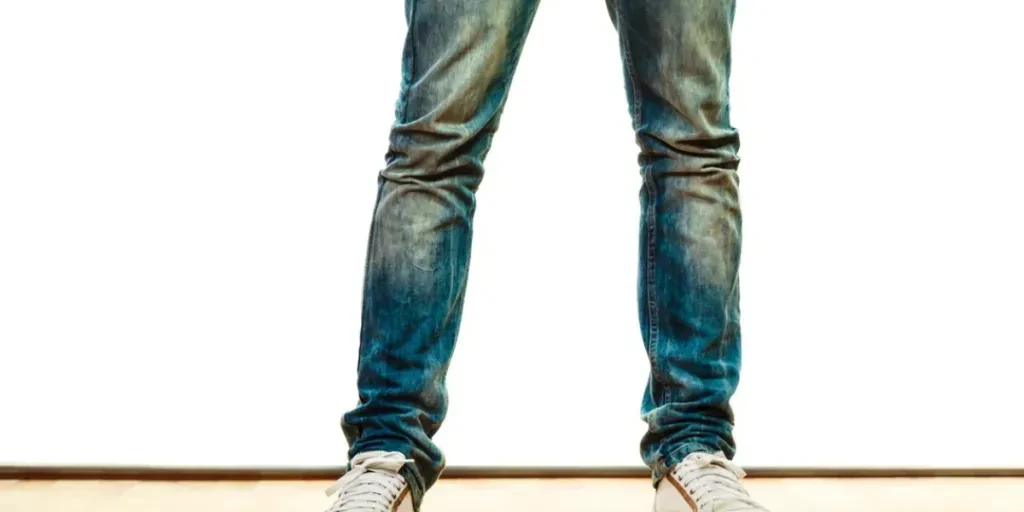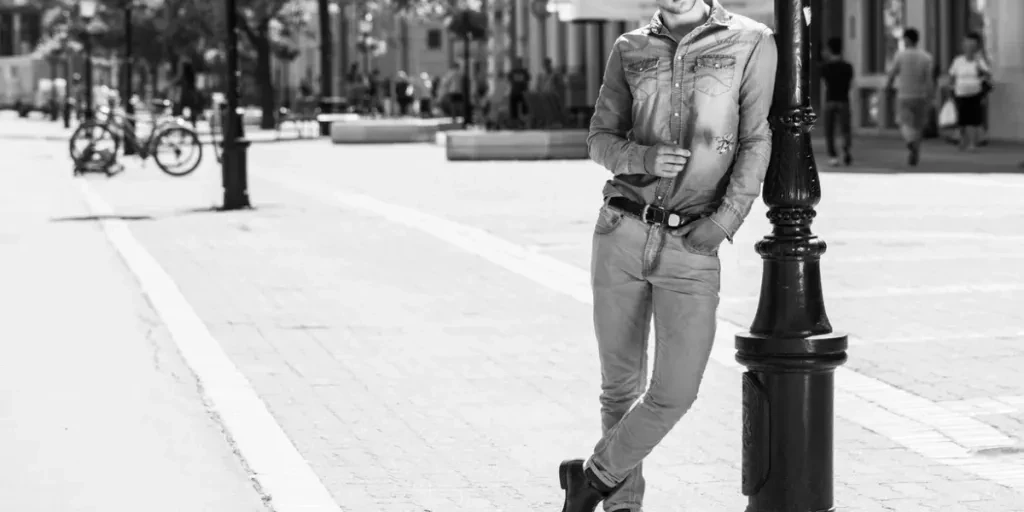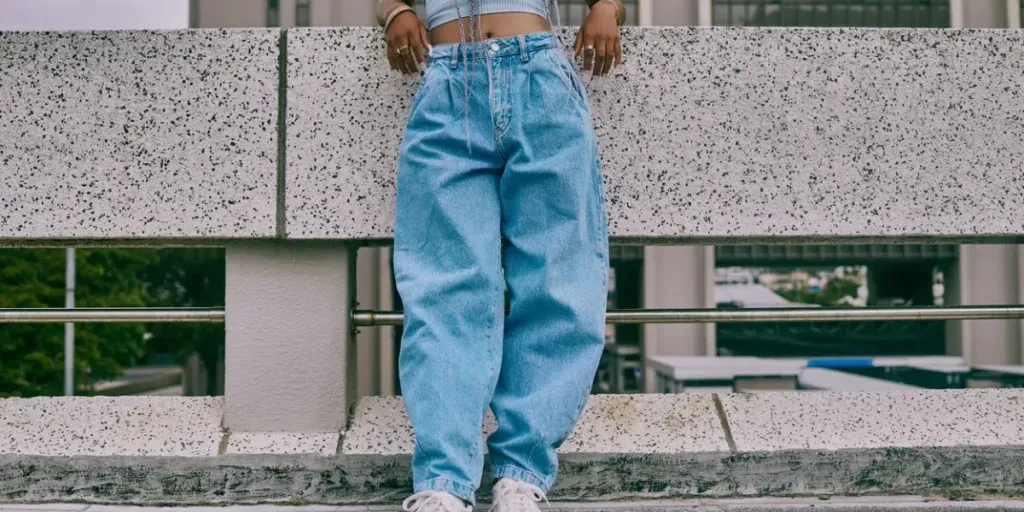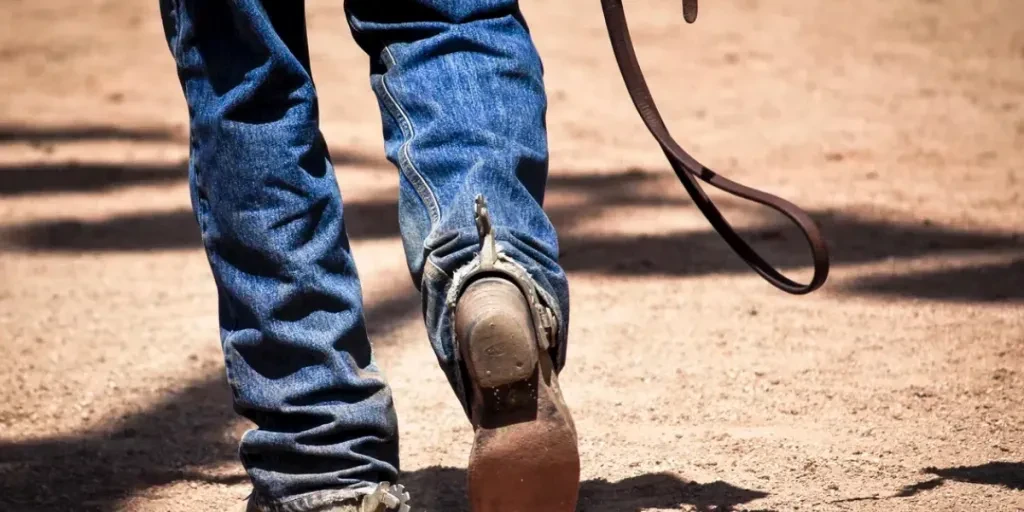Stacked jeans have emerged as a significant trend in the apparel industry, captivating fashion enthusiasts and casual wearers alike. Characterized by their unique elongated and bunched-up look at the ankles, stacked jeans offer a fresh take on traditional denim styles. This article delves into the market dynamics, key players, and global demand shaping the stacked jeans trend.
Table of Contents:
Market Overview
Design and Aesthetic Appeal
Functionality and Comfort
Cultural Influence and Heritage
Market Overview

The Rise of Stacked Jeans in the Apparel Industry
Stacked jeans have gained traction in the fashion world due to their distinctive style and versatility. This trend is part of a broader movement towards more relaxed and individualized fashion choices. According to a report by Research and Markets, the global denim jeans market is expected to grow by USD 2.28 billion from 2023 to 2028, with a CAGR of 6.71%. This growth is driven by expanding retail spaces, increasing fashion consciousness, and continuous product innovations. Stacked jeans, with their unique aesthetic, are well-positioned to capitalize on these market dynamics.
Key Market Players and Their Influence
Several key players in the denim industry have embraced the stacked jeans trend, contributing to its rising popularity. Brands like Levi Strauss & Co., American Eagle Outfitters Inc., and ASOS Plc are at the forefront, leveraging their extensive market reach and innovative designs to attract consumers. According to Research and Markets, these companies are investing in sustainable practices and advanced manufacturing techniques to enhance their product offerings. For instance, Levi Strauss & Co. has been a pioneer in incorporating eco-friendly materials and processes, which resonates with the growing consumer demand for sustainable fashion.
Global Demand and Regional Preferences
The demand for stacked jeans varies across different regions, influenced by cultural preferences and fashion trends. North America, particularly the United States, leads the market with a strong preference for high-quality and stylish denim. The region’s market is characterized by brand loyalty and a keen interest in the latest fashion trends. According to Research and Markets, North America accounted for the largest market share in the premium denim jeans segment.
In contrast, the Asia Pacific region is experiencing the highest growth rate, driven by rapid economic development and increasing urbanization. Countries like China, Japan, and South Korea are seeing a surge in demand for Western fashion, including stacked jeans. The rising disposable income and growing middle-class population in these countries are significant factors contributing to this trend.
Europe also presents a diverse market for stacked jeans, with a strong emphasis on fashion and design. European consumers are known for their fashion-forwardness and are often early adopters of new trends. The market in Europe is particularly receptive to high-quality, sustainable, and ethically produced denim, aligning with broader environmental and social responsibility concerns.
Design and Aesthetic Appeal

Unique Cuts and Styles of Stacked Jeans
Stacked jeans have become a significant trend in the apparel industry, particularly in the denim segment. The unique cuts and styles of stacked jeans set them apart from traditional denim. These jeans are characterized by their elongated inseams, which create a stacking effect around the ankles. This design element not only adds a distinctive visual appeal but also allows for a more relaxed and comfortable fit. According to a professional report, the S/S 25 catwalks showcased a variety of stacked jeans, emphasizing relaxed fits with slouchy, stacked legs. Brands like Masu, Amiri, and JW Anderson have embraced this trend, incorporating it into their collections with innovative twists such as released hems and vintage fades.
Popular Colors and Patterns
The color palette for stacked jeans is diverse, ranging from classic indigo to more experimental hues. A professional report highlights that the S/S 25 collections featured a mix of shadowy darks, bright cast blues, and vintage fades. These colors not only enhance the aesthetic appeal of the jeans but also offer versatility in styling. Patterns and embellishments are also gaining popularity, with designers incorporating elements like acid washes, badged-up applications, and Western-inspired embroidery. These details add a unique touch to the jeans, making them stand out in the crowded denim market.
The Role of Texture and Fabric in Design
Texture and fabric play a crucial role in the design of stacked jeans. The choice of fabric can significantly impact the overall look and feel of the jeans. According to a professional report, designers are increasingly opting for sustainable materials such as BCI-, GOTS-certified organic, and GRS-certified recycled cotton. These fabrics not only offer a soft touch but also align with the growing demand for eco-friendly fashion. Additionally, the use of laser finishing and organic enzyme washes helps recreate vintage fades and raw edge textures, adding depth and character to the jeans. The incorporation of Western-inspired embroidery and 3D embossed textures further enhances the visual appeal, making stacked jeans a must-have item for fashion-forward consumers.
Functionality and Comfort

Practical Features of Stacked Jeans
Stacked jeans are not just about aesthetics; they also offer practical features that enhance their functionality. The elongated inseams and relaxed fits provide ample room for movement, making them ideal for everyday wear. Additionally, the stacking effect around the ankles allows for easy pairing with various types of footwear, from sneakers to boots. Some designs also include utility details such as multiple pockets and adjustable straps, adding to their practicality. These features make stacked jeans a versatile addition to any wardrobe, suitable for both casual and semi-formal occasions.
Comfort and Fit for Different Body Types
One of the key selling points of stacked jeans is their comfort and fit. The relaxed, slouchy design accommodates different body types, providing a flattering silhouette for both men and women. According to a professional report, the S/S 25 collections featured a range of fits, from mid-rise to high-rise, catering to various preferences. The use of stretchable fabrics further enhances comfort, allowing the jeans to adapt to the wearer’s body shape. This focus on comfort and fit makes stacked jeans an attractive option for consumers looking for stylish yet comfortable denim.
Seasonality and Versatility
Stacked jeans are highly versatile, making them suitable for different seasons and occasions. The relaxed fit and breathable fabrics make them ideal for warmer months, while the ability to layer them with other clothing items ensures they can be worn during cooler seasons as well. The diverse color palette and patterns also allow for easy styling, whether for a casual day out or a more formal event. This seasonality and versatility make stacked jeans a valuable addition to any fashion-conscious consumer’s wardrobe.
Cultural Influence and Heritage

Historical Roots and Evolution of Stacked Jeans
The concept of stacked jeans has its roots in the evolution of denim fashion. Historically, denim has been associated with workwear, known for its durability and practicality. Over the years, denim has evolved to become a fashion staple, with designers experimenting with various cuts and styles. The stacked jeans trend can be seen as a modern reinterpretation of classic denim, combining traditional elements with contemporary design. The S/S 25 collections showcased a nostalgic approach to denim, with throwback silhouettes and vintage fades making a comeback. This blend of old and new has contributed to the growing popularity of stacked jeans.
Cultural Significance in Different Regions
Stacked jeans have gained cultural significance in various regions, reflecting local fashion trends and preferences. In Western countries, the trend is often associated with streetwear and casual fashion, with celebrities and influencers playing a significant role in popularizing the style. In contrast, in regions like Asia, stacked jeans are often seen as a symbol of modernity and youth culture. The versatility and adaptability of stacked jeans make them a global fashion phenomenon, appealing to diverse demographics and cultural backgrounds.
Influence of Pop Culture and Celebrities
Pop culture and celebrities have played a crucial role in the rise of stacked jeans. Influential figures in the music and entertainment industry have been spotted wearing stacked jeans, further boosting their popularity. The trend has been embraced by celebrities such as Beyoncé and brands like Louis Vuitton, who have incorporated stacked jeans into their collections. This endorsement by high-profile figures has helped elevate the status of stacked jeans, making them a sought-after item in the fashion world.
Conclusion
Stacked jeans represent a dynamic fusion of style, comfort, and cultural significance. Their unique design, practical features, and broad appeal make them a standout trend in the apparel industry. As fashion continues to evolve, stacked jeans are likely to remain a popular choice, offering versatility and modernity to consumers worldwide. The future of stacked jeans looks promising, with ongoing innovations in design and sustainability set to further enhance their appeal.




